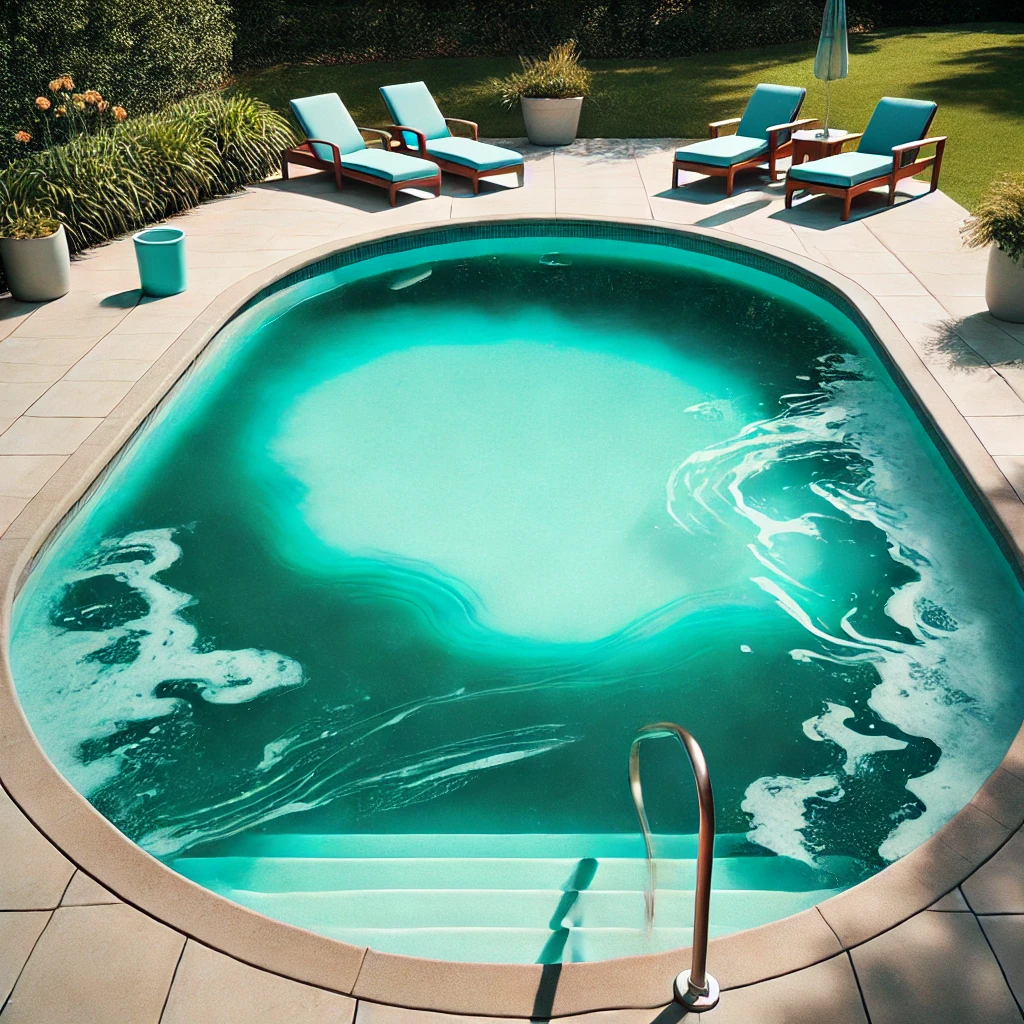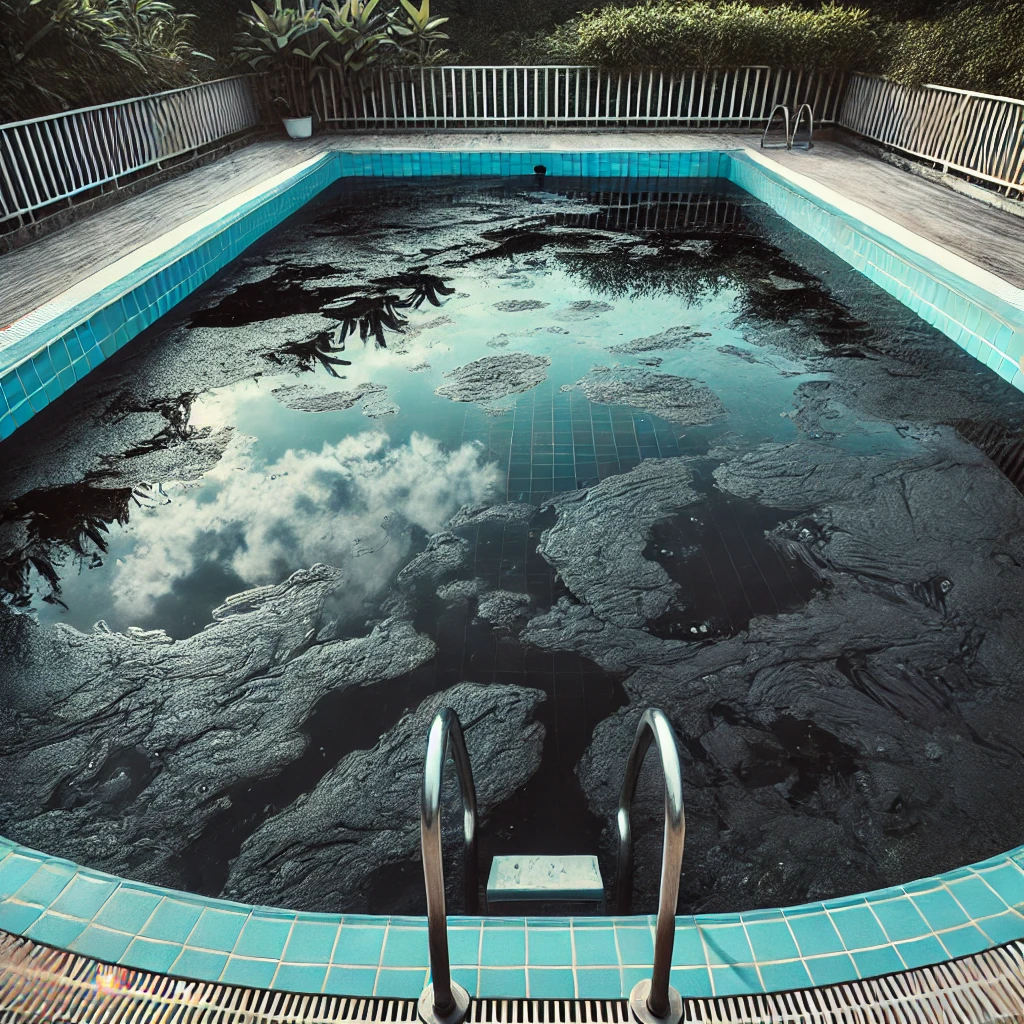Is your pool water green and murky? If so, you’re not alone. Many pool owners have faced the dreaded algae invasion, and while some have won the battle, others have struggled. If you’re ready to fight back and restore your pool to its crystal-clear glory, you’ve come to the right place. This guide provides a proven formula for defeating algae every time and keeping your pool water clear and healthy.
Understanding Your Weapons
When it comes to killing algae, chlorine is your primary weapon. Whether you use liquid or granular chlorine, it’s essential to have enough on hand before going into battle. Granular calcium hypochlorite chlorine shock, typically sold in 1 lb. bags, is highly effective.
- What is Shocking?
Shocking, or super-chlorinating, is the process of adding a large dose of chlorine to your pool to kill algae and other contaminants. For routine maintenance, the standard dose is 1 lb. of calcium hypochlorite per 10,000 gallons of water. But when fighting algae, you’ll need to increase that amount significantly.
Know Your Enemy: The Stages of Algae Infestation
Algae come in different stages of severity, and your treatment strategy should depend on how advanced the infestation is.
Teal Green (Weakest Stage):
If your pool is a light teal green, you’re dealing with the weakest stage of algae. It usually only requires a double shock—that’s 2 lbs. of chlorine per 10,000 gallons of water.
Green (Most Common):
The bright green color indicates a more severe infestation. To eliminate it, you’ll need a triple shock—3 lbs. of chlorine per 10,000 gallons of water.
Black (Hardest to Treat):
If your pool water looks black, you’re dealing with the most challenging stage. This will require everything you’ve got—a quadruple shock—4 lbs. of chlorine per 10,000 gallons of water.
Prepare for Battle
Before you begin the shocking process, ensure your pool is ready for the treatment.
- Run the Pump and Filter Continuously:
Keep your pool’s pump and filter running 24/7 during the treatment process. - Check pH and Alkalinity Levels:
Make sure the pH is between 7.4 and 7.8, and alkalinity is between 100ppm and 150ppm. - Brush the Pool:
Use a pool brush to scrub the walls, steps, and behind ladders. This helps expose the algae, making it easier for the chlorine to work. - Avoid Adding Other Chemicals:
Do not add any other chemicals until the algae is completely eliminated.
The First Attack: Shocking the Pool
For maximum effectiveness, perform your first shocking at night. The lack of sunlight helps prevent chlorine from breaking down too quickly.
- Dissolve the Chlorine:
Dissolve each bag of chlorine shock in a bucket of pool water. Stir carefully with a wooden paint stick, and wear protective gloves, eyewear, and old clothes. - Apply the Chlorine:
While the filter is running, pour the dissolved chlorine solution around the perimeter of the pool for even distribution. - Keep the Filter Running:
After adding all the shock, keep the filter running overnight.
The Second Attack: If Needed
If your pool is still green the next morning, don’t worry. A second shock treatment may be necessary.
- Repeat the Process:
Prepare and apply another round of chlorine shock the following night. Two rounds of treatment usually clear up the water if done correctly. If a third attack is needed, ensure your water’s chemical levels are still in the correct range before proceeding.
Cloudy Cleaning: The Final Stage
After successfully killing the algae, your pool water will likely be a cloudy blue. This indicates that the algae are dead, but there’s still work to do.
- Add Clarifier:
Follow the manufacturer’s instructions to add a clarifier to your pool. This helps gather the dead algae particles for easier filtration. - Avoid Backwashing:
Resist the urge to backwash your filter until the pressure increases by 10 lbs. over normal operating levels. Slightly dirty filters are more effective at clearing out fine particles. - Monitor Chlorine Levels:
Keep an eye on your chlorine levels. If they drop below 1 ppm, add more chlorine. Once levels stabilize between 2-3 ppm, you can turn your chlorinator back on. - Run the Filter:
Keep your filter running 24 hours a day until the water is fully cleared. Afterward, you can reduce the filtration time to 15 hours per day.
Defense: Preventing Algae from Returning
Now that your pool is clear, it’s crucial to take preventive measures to keep algae from returning.
- Regular Water Testing:
Test your pool water twice a week to ensure that chlorine, pH, and alkalinity levels are in the proper range. - Maintain Proper Chemical Levels:
Keep your pH between 7.4 and 7.6, alkalinity between 100 and 150 ppm, and chlorine between 1 and 3 ppm. - Consider Additional Preventatives:
You can add algaecide or phosphate removers as a weekly backup to help prevent algae growth.
Conclusion
Clearing a green pool requires dedication and the right approach. By following this battle-tested guide, you can defeat algae and keep your pool in pristine condition. Regular maintenance and vigilant monitoring will ensure that your pool remains a place of refreshment and fun, free from the threat of algae.

 Cart is empty
Cart is empty 



Add a Comment